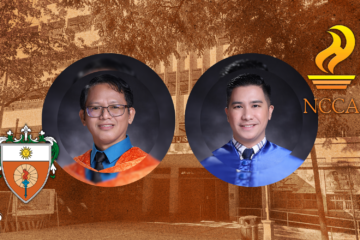
THE UNIVERSITY of Santo Tomas aims to incorporate Baybayin in all safety and street signs around the campus to help revitalize the Philippines’ cultural identity, its facilities management chief said.
UST Facilities Management Office (FMO) Director Fr. Dexter Austria, O.P. said directional signages containing the traditional script are expected to be installed within the next two to three months.
Efforts to come up with Baybayin-translated cautionary signs, meanwhile, have yet to be discussed with linguistic experts.
“[The upgraded street signs] are still in Phase 1. There are also phases that we still need to hurdle. It’s not just the street signs that we are doing; we’re also translating things like ‘no parking’ signs, caution signs and the like,” Austria told The Flame.
The Filipino department and UST Faculty of Arts and Letters Dean Prof. Melanie Turingan are handling the translation, he added.
FMO seeks to “augment” the street signs since some of them are only visible on online maps but not in person, Austria said. Inconsistencies in the signages’ color coding also aim to be resolved by the office.
According to Austria, the FMO and the Filipino department have agreed to follow the “traditional method” of producing the script, which is by first converting the words from English to Tagalog before translating them to fluent Baybayin. The method is “more accurate” than the modern version as the latter translates directly from English to Baybayin, he added.
“There are signs that we haven’t submitted to the AB Filipino department yet for translation into Baybayin—just those. But as for the street signs [and] driveways… we’ve already completed those,” the FMO chief said.
Earlier this week, the now-removed Baybayin street signages put up by the FMO drew criticisms from social media users who claimed that the script was inaccurately used. Turingan told The Flame that the street signs were just “prototypes” and were placed to assess their dimensions and visibility.
READ: UST places then removes ‘prototype’ Baybayin street signs
Asked how he took the reactions to the street signs, Austria said he viewed them with optimism as they have raised awareness and have sparked curiosity about the Philippine script.
“I want to delve into that kind of awareness and curiosity—that it should not only [be] to criticize and to criticize what is going on, but I want the Thomasians to look at it in a more positive sense; that this curiosity would lead to a more productive sense—the awareness, the reading and the writing of Baybayin,” he said.
Austria emphasized the importance of integrating Baybayin into daily life to revive the country’s cultural identity.
“We are institutionalizing here in UST so that, perhaps, starting from the city of Manila, all cities around the country could also replicate it so that we could see that we have our own,” he said.
“UST‘s history is in parallel with the history of the Philippines… The educational system and how we write are very western and I want to look at the Baybayin as a form of appreciation of our rich history [and] of our past.”
According to the UST website, the University stores the only known documents on paper to be entirely penned in Baybayin. In 2014, the documents were honored as national cultural treasures by the National Archives of the Philippines.
Interactive QR codes in buildings
In addition to the Baybayin signages, Austria said FMO is planning to install QR codes in all UST buildings to provide visitors more interactive details about the history of each structure.
“Because the history of UST is currently accessible through the internet only, we want to make it more interactive,” he said.
Austria said FMO would seek help from the UST Informations and Technology department on the generation of the QR codes. The information provided in the virtual guide would be formulated with the help of the Filipino and History departments, he added.
According to Austria, the QR codes will supply a detailed background of all structures in the University, including their “rich history” and the officials serving there.
“All of these QR codes will be for educational purposes because UST’s history is fascinating, and our campus has wonderful features. I want people to appreciate all of that,” he said. F — with reports from Erwin James Gianan



